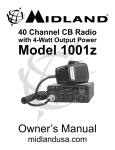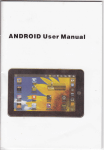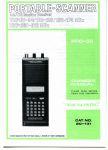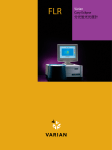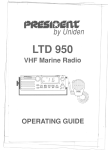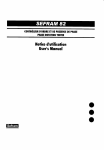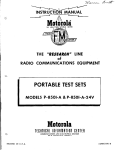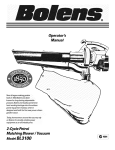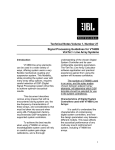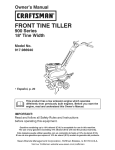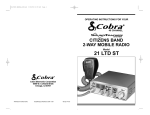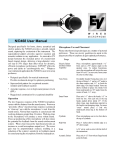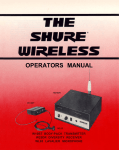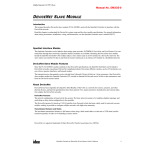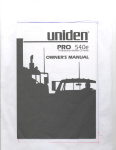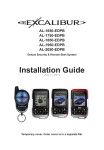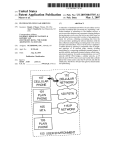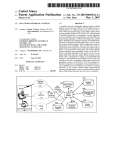Download "user manual"
Transcript
(
1--
I
,'.I"FV, ;',
,,';';j;r"7f<~.."J'.,:~r""'.f,.(
'?j"~\.~~E
'i.~h\:;"t'i,;'.i
~~~t~:i~~i~~.~~~$~
""~;~~t,,
i,~,,' ~~
"":'.,
J
;;'
H>'
':
,-;: .,"'
f:i;
::" ,Jo'
':""
~,
f.
,f",': 1~'
, .."
;~:r
!
!
,,'~'\,I
..
>
.~;:
<;1
:~;, kj. ,'<
~;
"'.>
,&
er (.
.1"': :,
...
:;1
),<
tJ~~."
.h
:~ ~~
',;:,
~:r::.
:,{'
',;(
~~~ft~
""I'
r'J
',~
1:\'::"',
-",.:(,Y'::
,":r;'~
'~'
s,.;"",
."
l,'A;
,s.
Ii-' :i:i;~,.'f
;;'Y'
~:,:...
;,:i
, '7':':'~
~rlf~!:(;:i'
::i:
g~,~~?!'~;f~;~~;~~~~.~FY!
~
h".
"'
.Ji"'"
(".if';:-;::;,,;,.;
.i~;'.
..;~
j
':~~;R":"'i',<.cri iQ;~~'J;
t~
~
:tt~
~::}~: .!:;~.<~"',t:";:>""
:;.:$'(, ~~.y
'.'
" ~
r~:;;~;;:r')';f).;,.c,,;/::::-~;..~:~;~.:}5,~
;.<j
ft:~.~'f,.~:)l~,:.?:~
~;\~~. ,:::~::
~: :~ iO;~,:~: ;~i(
;:~l,: ;;:'{,.<,;~ t'<',;:~?~~~
~.:~~i
:'
,~';;
~~~.'"
:.'r,;
""",:~:<'~
,'.'
"". "
:~~~:~
,"~~'7~"
r,;'
~~l~~~j:':"'"
;.. ~:E
~'v~:"
"',.;
,"
"
?J.",,- "::"'t\': ~~~;
J'~i):Sr~(.I~r
;I':}
,~2}\~j~z;:
~,':;',;~""",
":> .-:c';;K!~~;.,",
:t, {,
"'1. ,,'
1';,,~;'it::
}~;,?;
;1'),'"
I',>~sl~ :~~a~,,::~'t~ (;;,1 r.~~'L,.:;
~,.:.,
;, ~ ~,'f,':~\V,:
~ r.;-):';'?fj'~,~~,'"
'(;,
\.~',1
",
:!,..~,,:t.,~'.'
"
',. ~
:>">7',. 'J.'
:C1':;~.
:::q"""j,";"
,", '..Y
:\;,:~~~;:~Z::7:"~A~;
>~f'.j it:
..~ ~.f~~ ~:\~{:/1'
;,"',
,.~':::;
<","
J;j
~,';
lI
f1~~~:<"
~:!1~~,~:,:
.'4"
~'.' :;y~;{;;
1'£,
~;"
t~r;:.~ :~
{;;-6~':/',.':
,. !:';"':~'i:"i;~/';;~
~'~":;.<o<~ ii:;,:
,,;""
,...
,.:
'.' ;8~~~"
';,(:::.;
,,;',:
";t/)~
',:< ;.'1,"",
<,;"~il~
';";,t~~r~,7\~:4
~:J;'.
",p,
:s,..,~~;~;,},;
~<.':i
;i !~:;;~:';ir;:9~']:'.,:,
.i.,,"""
"""',,~""":'~(~',
~'!~i~
':,
13:'\'f;~~1
Lo.,
",."~: ",:?
.",. $f:s;{~ ,[" f~K-1;~"
:~'~.Jj~';~
.,:tJ~"\~'\'tf'?}C;i
i>""
'.. ?,":"
~f5~1~";
,;.
:",
F~:J ?~~';;"':'::;~~",;
)';~::>:ff'~';~
':;,;~:)2<:1;;
::r~~~~~
~\~~f!
',':
,',I'
"'./:'~1;~
,
;'.';
;~,
\:j"'~~{;' ';.:i\;t;;/ ~~~::.
!;'~' ""' :,'~.,.
,~,:2~~:
.. ::;:,,?f. )i.:,,:j,:';,;.
!/'~,,}2~~~~~~'1~:~'~.';t,
::":';.",r /.,)i('~: .!~~~~~~{.
"~"~."'6:;'::;
""~Jx,; ~'
:t:~i~;:,:f~~
.,', ~)"":'~\;;~~
,~\:i'L,i}'.:.:..,J~~r~;'K'5"""":!\:t':,\,;"
""';;"",'c::"'~:;~'~'p";
,;:: ?,:<:,.'. . ..,t.
':'~,'"j""";Y\~;t;)~'~)~J;
;1~;~;~~~!1
~
"~ .'"""":~;~~'
t;"*~!',\,S~?;,,,.,.:!,:"~';>,
i!;: "::~,';;~J~~}m
i"~~"~~c
:., "':::;'i.:
~ :,.,;.'~" ):.1,
,,: '~':~,~~~i;:;:
".;'t<:;~'+~;':
::',::~\~i
';',
:~?'"
~:--;'i,::
::; t~'l~i~~:;'d
;~, '~;
,"', ~(
~;i~::"';y~~::'~
~
";.t~
~
[
r~~ 5:~~r
;';:{'-~'~~t,~,;r.:,';'V; :j.)~,t
~'.'~$'.1.;
,;1'. ;,/~i
.:;:';!~~"i""
;k' ~,';
.
;~~::;:\.>;;;~:,:~t~.;.,\~". f;-i ;'2::::'~J;~':l~
':..;:-~;
~7"~.:;":;~':;.~
'~;, ~'~
2}!1~,:,,:,
')~~~:" ~;":'.;t.'
;:".i~:"'t::;:i'l:b":':';tl"".'
""<1:2
,.~ ~~~'
y~' ~t~~.2~9~.",;;..r:~,1,t~;~~~;j'r
,~:~~~~~,:4~
~!::~;I*~;~" ~
'pi {';'::;,'~;.!
~;.~
~';; ~qr,~'1\:';,<
:~;;;,
;",""
',.;,:,,'"
'"
"'::;"""\~<';""-'
,":'1",:;4..;;/
,C'.""""';:"!'-"
'A;;' t<,>~.
"j;;'~?f ,".~l:
'.'1.. ~",J.", ';~~,";'i~:'"
;\~.,;..r"!~",:~
'" 'h~{r)i:;' ...''f...;"f':""':{\.~~;;~~";~
--
\':
""'"Ct""
"...;'
,
t( ,:','.«
. ~1i~":<'~:"::i
. '?::<"";:;';~::;:;~:~/~
'-'
',':1'\.
,,:~'s:~!~~)}~:~t:;v'l'::~}r~'it,\.
-:-t: ~:;~
'\;-I\~1',
';;?~i:':';i
i,~i} ;:~~
:;~'~'t~~-;y'"
't::';~"".,.~.:,~:;X'i',~"
:~;',}"';jS~~Ij !''i'.:;.'",.:,~
~; ~':i~~t;"
","i'"..,\~~,.,"
*, ;;.: 1~..,,>'y,:,:J,i'(l
,I.';'"
,,-,,/: ',"',.",!;
" ;~~,:...~;:j
.t',,'
) {:4 '."
'i
,.
~Z;'t:1.;[~:i!;<
~~'<' (':i,:h'"""'.,;':.',,:;:..".:,'1
'p,
,<
;:'~~\~..
~~~'
',,'
11»:
~;:~~':~:,~
:'i'lK/J
f~"'i:'f!
;:~
~
;:;:,;,,:~i:j;';;,:~
f('I~ ,j'j,!;v.
": '.~
~i-'~~',)
,), ,~5\,';~
\"7<
~,,""
:"';.}:~"
~:,? {~q:;;'lt~;t!' ~';':"~~:~.:/~~,"
I'
tf',
,.;;} ~~'"t
~".-j ?;:'
';5;,;::::7"~:)
';-r"):.'~'J.\~':f;'('>,:',~{;
I""{~-\,~'~
l:;;:~~
\7","
.3 }" / :~ .n ~ ~ ~t~
~J...,);'(~~~"'~:'l
1116'
'~"'.""J"""'~':i!t;}
,..,.;£f. rc,'::'
t~ "'1';\',
~iJ,~t;;:~
...,'/
~";.,i.
~;5<~ 'f'~'"
;""',~~,~?
:';(1;.
..~~ :"'\Y't~"'~;'?i":"'~::
lfi",t.'!":.~{
~~t"" 1,' '.;'\,;';
.'
',U'"':J',::~
""'1",,-"n,
~~:~t;~;}
l,l""""'i;":;f.\j
'..,!
,.
~: 'ii,fl)
~~,~:,~
I
r~"'~
;2~t~;;;
~];
'~" ,'f
;L ';. :"."
.i:j ';","'"
k'if',' i,"Z'-::;';',
;;'1(:/,'y;J",':;",
~",,',~>i'~~::"'~~:
"~~i,;."::',;,;,
..'
'li,:~
l
}:
',;f~'
~iJ~~~[J.:"};
..~ '?;~;:~
:.:-.~',;~;'
k(~;~t,', ~,;~,.,
j.
~
~rX::"f'
;.. '-}." ',JJ<"i;}',( -,
1
~,f
,~~~, ~: :'~,
;;:~'f;~~'it:::<,
,'"
't ,)t:.'
;;",v,
,~
t~;,~~i;~~
". ""0:""£i" ~:~?lL,!}':<1~
;,;;,d~2f;;'11 ':*'~
~:~~~,., ~ '~~,~,t~;'!t/fi~~
~;~" ~~%~:~ ",hj";;:Ji:":\~.~~;':~:
i~~~tj~
~1~;~t~\'>:~~':'"
[~~)::,~,~ ",.r,(,.:~Y'I;.;~.Si
0':;--
;';,!~~ ',t,'
!1"!,t'~
"..
;~~~.""<" ~""
J~t~"".:'~~?"i
;~:',;;..,
~l.'"
":':,('-<:':5\." l'/:
';j'~:
c' ,1:~i'
'.'
~:~;.~~~~3t,
~l{'H ,.;
"
"
i~~",
I::
-
','
~:::h
!
'"
<'
,'"
3
:Ji""}'f"""{"
' .::
~,"
~ ,:;J
"h
[;'
ll/~~'?'~:~~i;:
,~~...~
-, ",.;
;'" ",;: ',.:',.:('<~
,
"",
'. ::,;~,"
.f.:~'
.. "( ,":' ;::":'£'!,:':t"
. ,
':-::!f
:P'..,
..V'.
, >}~
r.,.:'1.-
~~f;::'
h&1ttf~;j
'2"i-f:'
,:";","T"~
.
t
!h.}
;,.{ w"':".
?t?:::J¥G~1'
,':;.~;,
~ ;.
.
"""
l,:., ,..,',,'
,
"
t-
';i~1\\l:tH'}!,,;"':;";
,..,':'~~'~
~~.?> ~~~1~~~~~
:';';:-..::'"
:;' \;'J"',;)
,T>;-.'.,
""~'~,
,!,';
"."!.~~~:[.:};'
~~>i~, ?!.
:;..':'~.
t{ ".J~':!
r',
u,
~",
,,',i>.'£'.';
'/\1;
~;j
::';~'}';f
';. ~,;~:~,
(~
"c::~£ ~. .'~
'.
."."""
,"'
,..
<:1;'
,\""'~
~t~r,~tt~
f?t
"':';t.
'i) ."_!-,:);~~,:!,.i~~~i;~:y
};;:;,'>~~~J~"
!;c
,;,;~1.¥;;';';j':.:. ~',
,,~~...' 7,,",.;0;'
f
'.
"
I~':l'
i'",
(,"",,"1;'
~
'.'9"
,,~;~~"'"
:',;,~.;;
",-71
"-,
~... ;,,-:-.f.S~
,~~Jf~\
,..,.'>t,';,;,
,., "':"".r:' .2 '€,r:J"
~:
{,)!t,~
'1';i:'
>,
'
,.
k'M
'5' '~~
i
Z
,
c,-.,", :C I' ~"F
.:::"'\<;
~:t..~i~
r~",::'~,:~
t'1~l.i~,~
(/( i~'!,~.~,~,;t;
"":~'f-.~Jt
r:\i. ;"'~';~~:~:;.:~~ ;"
,;;:;';;;;'1;:':,:~".1
'~~, C~~~t'~"j": '.~ ~J
,t j..;
','
{',
I I
.-:':"";0.t,,;:;'>.;
I:'
.,.;., "
':
'J
;~
:~;,/J'!..; ~ry,(""",
:,'-::','2
','~ '!""'~:';~!':'~
'"
~ .,.:,', ~
t',,{'
,~~j..,"";",,,
>t."
",
"
,
-
~~~l;""C~::I"c"':'i)'
,,'
~;C~
,.
t
1""'"":.
.," ;'[;
:'-:":~)',
.:'1
~";;",
,~,;
'T"':
~
/ "';,
~:"~~~
.',...5~~.
t" t:r.~{~~{:{~:Ji"'
;..i:~;"'i,
:..,:;
::.."t",,";:'~',;;f,r:~:t~~';~~<:':\
~~,.;:~~;i~;~
~
~,~~~,
":'}:~',:~,,~'.:
";:
J ."»Z',.;;;,>"
:V ~...:
,"'-:
{,
,:;~t:
~f'1;;..r:"
:h
'~AI ~"~('"
iI
~
,I
-
,~. '~:"",..,;,r';""'t"i"t";~,'" ~;h(,
'('I';..",..: 'fi
1
},'".,.,.!",.
~~
iJ:
~L...",
=::::-I(
:'~~:;'~;~~:'~;~'C/<8
~~~~t.f:"'~:.
'~":"'
~17rJ~;
'~':
.~::(;~;ji":Y:>'
)
~': ;':::T§
,.
:It. ""/.;;": ',.'
;"~0 , ;~:;~~" :f.'.<~~t
:~: ;~::w~
+~:,;,.
~~~;...
"§!~;~ ".~i
'r
;:;';'1
. }(! "1 i'.,."
~}' fi"'"
':',
.' ,~, ~~..?
~;,
:'
,
;"'0:
r ;~":;
.;, '."I ".,.':"';:
i'l';11...:t:~""""'2'
f~E;;'i~ ';'¥1fJlly~>,;I'1.;'::~':i:r;-;::,\:;.
,'~.
;-"5,',; ;;.,:,:
"T "'~"'\':"~;\(;;fr:~~~'..'~!.j~~:.::~:.;;
:':~<d,;f;'j
~~';;)i~;~lt:]~~;.
,:
:~
" .~;':';~
:','~,;.j.~ ~~ \,h"
~"
~
;<~>(
~~~jV' t1~~~" \.:'"
~~~!~~':'/";i,;;
~
"",, "t',..
~~~)f~.:~:~:,~:"t'
~.:~~j?
'~7~,\:;~
~';\:::"';;:,,~t
;y:!~~,{;
,:~';"I'.i"';,;f.'
"t .:'(1'.;;,' .l.' ('~'/:':I::~;:;f;' ~~"{:2:{,jli'.(
'fl"', .;.':.t:\\"':,"')";'::
'i'", }:(;:\,.
---
"'r::;f.:;~ ~;;J""7,,;;,...,:':\"'~'-~
:,'
,,\:~ :,;"
"
':'\
~
"f""'"
,:~~;;,;',:~~j~~(,~
~:I.:; ~~~.
,~. "'.) . i'1:,(~~"~
"
;;";!'~~.)';'h;t::\:~~":7,£J)~~~::i
".f,
:~:!;~:'i
.."',.
1;:;~1,:' ;" .,;;,,'. ~;1'~
------
I
'
I
~
T
f
~-L-
~
Introduction
Congratulations! You've chosen the President P300 as your mobile SSB CB radio.
The P300 has been engineered to exacting industrial specifications for reliable,de-'
pendable operation. This radio gives you a full complement of features, such as
adjustable mic gain, adjustable RF gain, S/RF Meter, Instant Channel 9, and many
other features to make operating the P300 as easy as possible. The P300 also features Phase Locked Loop frequency synthesis for precise transmit and receive frequency control and long term stability. This radio has been Type Accepted and certified by the FCC for use in the Citizens Band R'adioService.
Warning
The Citizens Band (CB) Radio Service is under the jurisdiction of the Federal
Communications Commission (FCC). Any adjustments or alterations which
would alter the performance of the transceiver's original FCC Type Acceptance or which would change the frequency determining method are strictly
prohibited. Replacement or substitu.tion of Crystals, Transistors, IC's,
Regulator Diodes or any other part of a unique nature, with parts other than
those recommended by us, may cause violation of the technical regulations
of Part 95 of the FCC Rules or violation of the Type Acceptance requirements
of Part 2 of the Rules.
Elimination of Licensing
The Federal Communications Commission (FCC) has ruledthat Citizen's Band (CB)
\
Radio Service operators no longer are required to obtain an FCC license to operate
their CB equipment. In doing so, the FCC also decided to permit CB station operation without station identification.
Elimination of individual station licenses results in no lessening of the operating
privileges or responsibilities of CB users. An operator of a CB radio station is still
required to comply with the Communications Act and with the rules of CB Radio
Service.
.
'
Servicing your transceiver
The technical information, diagrams, and charts will be supplied upon request.
It is the user's responsibility to see that this radio is operating at all times in accordance with the FCC Citizens Radio Service regulations.
We highly recommendthat you consult a qualified radiotelephone technician.for the
servicing and alignment of this CB radio product.
Pleaserefer to the WARNING information above.
Note: When ordering parts, it is essential to specify the correct model number and
serial number of the unit.
-
-
--
-
-
------r:-
-
@
@@@@
@@@([
1. Mic Gain - This control is used to adjust, as required, microphone input sensitivity forthe optimum amount of modulation in transmit. President CB radios have
been designed to permit the user to attain levels of modulation up to 100%,depending on the setting of the microphone gain control, using the microphone provided
with the unit. President's automatic compression and peak limiting circuits assure
maximum modulation with minimum distortion.
2~ RF Gain - This control is used primarily to optimize reception in strong signal
areas. Gain is reduced by counterclockwise rotation of the control.
3. S/RF Meter - This meter shows the RF power when transmitting and the
strength of the incoming signal when receiving. A change of one "S" unit indicates
a change of 6 dB in signal level. The metering circuit is calibrated so that for 100
microvolts, the S meter will read S-9.
4. Channel Indicator - This LED display indicates the channel number currently
selected.
5. Channel Selector Switch - This switch selects the desired channel for transmission and reception. All channels, exceptchannel 9, may be usedfor communications between stations. Channel 9 has been reserved by the FCC for emergency
communications involving the immediate safety of individuals,or immediate protection of property. Channel 9 may also be used to render assistance to a motorist.
This is an FCC rule and applies to all operators of CB radios.
6. TX/RX Indicator- LED which indicates the mode of operation; green for receiving, and red for transmitting.
~.
7. Press-to-talk Microphone - The receiver and transmitter are controlled by the
press to talk switch on the microphone. Press the switch to activate the transmitter; release the switch to receive. When transmitting, hold the microphone two inches from your mouth and speak clearly in a normal voice. The microphone
provided with your radio is a detachable Iow impedance dynamic type.
,
8. On/OffNolume Control - Turn clockwise to apply power to the radio and to
set the audio volume to the desired listening level. Turn fully counter clockwise to
turn the radio off.
..
.-.-------.-------.
~J
--
~
r
I .'.-
~,~
"""""'-'-'~
'"
---,--,,--
-.._-..
.. . .-
_.- . ., - -
Controls and Functions
9. CH 9 Switch - When placed inthe CH 9 position, the receiver ant transmitter
are switched to channel 9, the emergency channel regardless ofthe channel selector setting. The OFF positionrestores frequency control back to the channel selector switch.
10. CH 9 Indicator - When lit,this indicates that channel 9 is selected.
11. Squelch Control - The squelch control is rotated to cut off or eliminate
received background noise in the absence of an incoming signal. For maximum
receive sensitivity,it is desirable that the control be rotated onlyto the pointwhere
the receive background noise or ambient background noise is eliminated. Turn the
control fullycounter clockwise,then slowlyrotate clockwise untilthe receive noise
disappears. Any signal to be heard must now be lightlystronger than the average
received noise. Further clockwise rotationwillincrease the threshold levelwhich a
signal must overcome inorder to be heard. Onlystrong signals willbe heard at the
maximumclockwise setting.
12. PA/CS Switch - This controlengages the PA (publicaddress) function. The
PAfunction should not be used unless an external speaker is connected. Inthe CB
position, the PA function is disabled and the radio willtransmit and receive on the
selected channel.
13. NB/ANLSwitch - This switch, when set inthe NB/ANLposition, activates an
automatic noise limiterand Noise Blanker circuitwhich reduces impulse type external noise.
14. Dimmer Switch - Thisswitchis used to adjustthe brightness ofthe LEDchannel display and the meter. DIMposition reduces brightness.
15. Clarifier - The clarifieris normallyset to the center position. Thisfeature has
several uses and can greatly enhance receiver operation. If a receive signal is
slightlyofffrequency, this control can be operated to optimize the receive signal.
This control is primarilyintended to tune in SSB signals, but it may also be used to
optimize AMsignals.
16. Mode Selector - This switch selects AM, USB, or LSB mode of operation.
This selector changes the mode of operation of both transmitter and receiver simultaneously. Set the selector to the mode on whichyou wish communicate.
li
I
I
i
17. Mode Indicators - For easy identific1ation,each mode (AM,USB, LSB) is
shown in a differentcolor.
Antenna Connector - Thisfemale connector permits connection of the transmission linecable male connector (PL-259)to the transceiver.
Public Address - An external 8 ohm 4 watt speaker must be connected to the PA
SPKR jack located on the rear panel when the transceiver is used as a public address system. The speaker should be directed awayfromthe microphoneto prevent
acoustic feedback. Physicalseparation or isolationof the microphonee and
speaker is important when operating the PA at high output levels.
.,-~--
J
--
~
r
-
L
T
Power- This jack permits connection of the DCpower to the transceiver. A power
cord with polarized plug is supplied with the radio. The polarized plug ensures that
the power will always be connected properly.
External Speaker - The external speaker jack is used for remote receiver monitoring. The external speaker should have 8 ohm impedance and be rated to handle
at least 4 watts. When the external speaker is plugged in, the internal speaker is
automatically disconnected.
Warranty
Warrantor: Regency, a division of Uniden Corporation of America ("Regency").
Elements of Warranty: Regencywarrants, for the duration of this warranty, President P300 CB Radio (hereinafter referred to as the Product) to be free from defects
in materials and craftsmanship with only the limitations or exclusions set out below.
Warranty Duration: This warranty shall terminate and be of not further effect one
(1) year after the date of the original purchase of the Product or the time the Product
is (A) damaged or not maintained as reasonable or necessary, (B) modified, (C) improperly installed, (d) repaired by someone other than warrantor for a defect or malfunction covered by this warranty, (E) used in a manner or purpose for which the
Product was not intended, or (F) sold by the original purchaser.
Statement of Remedy: In the event that the Product does not conform to this warranty at any time while this warranty is in effect, warrantor will repair the defect and
return it to you without charge for parts, service, or any other cost incurred by warrantor or its representatives in connection with the performance of this warranty.
THIS WARRANTY DOES NOT COVER OR PROVIDE FOR THE REIMBURSEMENT OF PAYMENT OF INCIDENTAL OR CONSEQUENTIAL DAMAGES. Some
states do not allow this exclusion or limitation of incidental or consequential
damages, so the above limitation or exclusion may not apply to you.
Warranty Registration Card: In order to facilitate the servicing of this warranty by
warrantor, the Warranty Registration Card should be returned to the warrantor.
However, return of the Warranty Registration Card not a precondition of this warranty, and this warranty will be observed by the warrantor whether or not the Warranty Registration Card is returned, provided that other satisfactory evidence of the
date of purchase is provided.
Procedure for Obtaining Performance of Warranty: In the event that the Product
does not conform to this warranty, the Product should be shipped or delivered,
freight prepaid, to warrantor at Regency Customer Service Center, 9340 Castlegate
Drive, Indianapolis, IN 46256 with evidence of original purchase.
Legal Remedies: This warranty gives you specific legal rights, and you may also
have other rights which vary from state to state.
This warranty is void outside of the United States of America.
~
J
'--
--
---n
Installation
Mobile Station Installation
Plan the location of the transceiver and microphone bracket before starting the installation. Select a location that is convenient for operation and does not interfere
with the driver, passenger, or safe operation of the vehicle. The radio should be
securely fastened to some solid surface, using the mounting bracket and self-tapping screws which are provided.
Mobile Station Antenna
Since the maximum allowable power output of the transmitter is limited by the FCC,
the antenna is a very important factor affecting transmission distance. It is for this
reason that we strongly recommend that you install only a quality antenna with your
new radio. You have just purchased a superior transceiver. Don't diminish its performance by installing an inferior antenna.
Only a properly matched antenna system will allow maximum power transfer from
the 50 ohm transmission line to the radiating element. Your President dealer is
qualified to assist you in the selection of the proper antenna to meet your application requirements.
For automobile installation, the whip antenna may be used with good effect. The
most efficient and practical installation is a.full quarter wave whip antenna mounted
on the rear deck or fender top midway between the rear window and bumper.
A short "loaded" whip antenna is more convenient to install on your automobile, although the efficiency is less than a full quarter wave whip antenna.
For marine installation, consult your dealer for information regarding an adequate
grounding system and prevention of electrolysis between fittings in the hull and
water.
Connecting the Power Cords
With regard to the connection of the power cords, it may be possible or desirable to
connect the (red lead for negative ground.system) or (black lead for positive ground
system) to the ignition switch accessory terminal sothat the transceiver is automatically turned off when the ignition switch (key) is turned off.
Alternatively, the power lead may be connected to an available terminal on the fuse
block or even to a point in the wiring harness. Care must be taken, however, to
guard against a short circuit condition. When in doubt, please contact your vehicle
dealer for specific information for your vehicle.
""'...
=r
~
_.- -. - -. -
-
--
------ r-
.
-=
Installation &O~eration
Ground Information
Note: This transceiver may be installed and used in any 12 Volt DC Negative or
positive ground system vehicle.
Most newer US and foreign made cars and small trucks use a negative ground system, while some older cars and some newer largetrucks may use a positive ground
system. A negative ground system is generally identified by the negative (-) battery
terminal being connected to the vehicle motor block, but if you cannot determine
the polarity system of our vehicle, it is suggestedthat you consult your vehicle dealer
for definite information.
Negative Ground System
If you are operating on a negative ground system, connect the red DC power cord
from the transceiver to the positive, or (+) battery terminal or other convenient point
and connect the black power lead to the chassis or vehicle frame or negative (-) battery terminal.
Positive Ground System
If you are operating on a positive ground system, connect the black DC power cord
from the transceiver to the negative or (-) battery terminal or other convenient point,
and connect the red power lead to the chassis or vehicle frame, or positive (+) battery terminal.
Operating Procedure to Receive
1. Be sure that the power source, antenna and microphone are connected to the
proper connectors before going to the next steps.
2. Turn the unit ON by rotating the volume control clockwise.
3. Set the channel selector switch to the desired channel.
4. Set the mode selector to the desired mode (AM, USB, or LSB)
5. Set the Volume control to a comfortable listening level.
6. Listen to the background noise from the speaker. Turn the Squelch control slowly clockwise until the noise JUST disappears (no signal should be present). Leave
the control at this setting. The Squelch is now properly adjusted. The receiver will
remain quiet until a signal is actually received. Do not advance the control too far,
or some of the weaker signals will not be heard.
7. Use the Clarifier to clearly receive USB or LSB signals.
==t
..:5
----- [
~';-:::~::t\,..t'.f:'r:,~~,,~,~~~~.;,r.«,1"~>.
""",;";:"!':.h..;;~J_"""h~.<"";;'
" ""~,:-,,,-'q'
,',,'<
",..,-
n
..
, ,..,
OQeration & Maintenance
2
a
Operating Procedure to Transmit
I'
,
~
Warning
;~
;
~
~
,.'.
,
'\
~,
;~
~
~
The transmitter Voltage Standing Wave Ration (VSWR) measurement
must be
performed prior to the use of the transmitter. A VSWR ration in excess of 2:1
may damage the transmitter.
1. Be sure that the operator has read and understands Part 95 of the FCC Rules
and Regulations prior to operating the transmitter.
2. Select the desired channel and mode.
\'
...~
\i
~~
si:
'..
',:
:J
3. If the channel is clear, depress the push to talk switch on the microphone and
speak in a normal voice.
Preventative Maintenance
At six to twelve month intervals, the following system checks should be made:
0
1. Check standing wave ratio (VSWR).
~
2. Inspect all electrical connections to ensure that they are tight.
g
;,~
.d
3. Inspect antenna coaxial cable for wear or breaks on shielding.
~,;
(
.~1
"
:r:
~~
~
'"
"1
~,
E:;
.~
4. Inspect all screws and other mounting hardware for tightness.
Troubleshooting
Operator
Should the unit malfunction or not perform properly, the operator should perform the
procedures indicated below:
1. If the transceiver is completely inoperative:
.~ ~
.~
',I.
~'
~~
A. Check the power cord and fuse.
;?
A. CheckON/OFFNOLUMEcontrol setting.
;:)
2, If trouble is experienced with receiving:
;t.
B. Be sure squelch is adjusted properly. Is radio over-squelched?
A'
C. Check to see that the radio is switched to an operational mode.
)I,:.
,\;
~.~
u'j
~~
(~
~~
3. If trouble is experienced with transmitting:
A. Check to see that the transmission line (coaxial cable) is securely connected to
the antenna connector.
",
B. Be sure that the antenna is fully extended for proper operation.
.(
C. Be sure that all transmission line (coaxial cable) connections are secure and
free of corrosion.
(~..
~~
~~
,.1
i;,j
1-:~
-
~
- .
--
r
---------1
I
----
SQecifications
General
Channels
Frequency Range
Frequency Control
Antenna Impedance
Power Input
Accessories
Size (WxDxH)
40AM/40 USB/40 LSB
26.965 - 27.405 MHz
Phase Locked Loop Synthesized
50 ohm
13.8V DC nominal
DC power cord
Microphone
Microphone hanger
Mounting Bracket
7 9/32" x 9 5/64" x 2 9/32"
Transmitter
Output Power
Emission Type
Hum and Noise
Frequency Tolerance
Modulation Percentage (peak)
Spurious Rejection
4 watts
AM/USB/LSB
Better than - 40 dB
0.005%
100%
Better than -60 dB
Receiver
Sensitivity at 10 dB S+N/N
Sensitivity at 500 mW
audio output
Squelch Threshold
Squelch Tight
Signal Meter S-9
Audio output power (10% dist.)
Selectivity @ 6 dB down
Adjacent Channel Rejection
Image Rejection
Speaker Impedance
0.5 J,lVAM, 0.25J,l\{SSB
0.5 J,lV
0.5 J,lV
1000 J,lV
100 J,lV
3 watts
7KHz
-60 dB
-80 dB
16 ohm
PublicAddress
Output Power @ 10% dist.
3 watts
1:
--
~
r~
I,=
_.
-
-
-
-
_'h
Channel Frequencies
Channel
Channel Frequency
in MHz
Channel
Channel Frequency
in MHz
1
2
3
4
5
6
7
8
9
10
11
12
13
14
15
16
17
18
19
20
26.965
26.975
26.985
27.005
27.015
26.025
27.035
27.055
27.065
27.075
27.085
27.1 05
27.115
27.125
27.135
27.155
27.165
27.175
27.185
27.205
21
22
23
24
25
26
27
24
29
30
31
32
33
34
35
36
37
38
39
40
27.215
27.225
27.255
27.235
27.245
27.265
27.275
27.285
27.295
27.305
27.315
27.325
27.335
27.345
27.355
27.365
27.375
27.385
27.395
27.405
NOTE:This radio has been designed to operate in the 11 meter Citizens Radio Service. It uses a frequency synthesizing circuit with Phase Locked Loop (PLL) techniquesto provide crystal controlled transmitand receive operation onall 40 channels.
The PLL circuitry assures ultraprecise frequency control. It is designed to meet the
FederalCommunicationsCommissionrequirementsapplicableto equipmentoperating in the Citizens Band Radio Service, and is notto be used for any other purpose.
-
i
""
I
'-
_.-
-
-
--
----
[--
~
I
I
I
I
I
I
I
I
I
I
I
- - - - ---- -.. - - - - - ~~cmr
cur-
IIiiiiiI- - -'...- - - - - - - --
...~~
P 300 Product Registration Card
Thank you for choosing a President Penonal Communications
Product. You have chosen one of the
most sophisticated,
technologically
advanced electronic
products available.
Please fill out the requested Information on this card so that we can better undentand
our customen
and their needs.
WIth this Information we can plan new products,
grams. Thanks for your help.
advertising,
and guide
our customer
service
pro-
1. 0 Mr. 2. 0 Mrs. 3. 0 Ms. 4. 0 Miss
6. Initial
5. First Name
7. Last Name
I
I
8. Street
9. Apt. No.
I
I
l' o. City
11. State
12. Zip
,
I
I
I
I
I
I
I
I
I
,..
I:
-t
I
I
.
.
.
.
.
.
13. Date of Purchase:
14. Serial No.
.
. ,.
I
II
II
Mo,
Day
Yr
U~
, 5. Is this the first CB Radio you have purchased
or received as a gift?
YES0
NO 0
16. If NO, please specify brand and model
number purchased.
A.
B.
C
17. Where did you purchase the product?
0 Department Store
0 Discount Store
0 Catalog Showroom
0 Electronics Specialty Store
0 Local Electronics Dealer
0 Mail Order
0 Gift
0 Truck Stop
18. How did you become
~
www
aware of this product?
0
TV Advertisement
0
0
0
0
0
0
Magazine Advertisment
Newspaper Advertisement
Store Display
Friend's Recommendation
Salesperson's Recommendation
Previous Use
19. Please check two of the factors that most
Influenced your purchase of this product.
'I
0
I
I
I
I
.
0 Price
0 Reputation
0 Warranty
0 Previous Use
0 Features
0
Style or Appearance
Quality
20. Please check your age category
0 Under20
0 20-25
0 26-30
0 3 J-35
0 36-40
0 41-45
0 46-50
0 51-55
0 56-60
0 61-65
0 66 &Over
21. Occupation
0 Homemaker
0 Teacher/Educator
0 Professional Driver
0 Executive/Administrator
0 Civil Servant
0 Sales/Marketing
0 Clerical
0 Farmer/Agriculture
0 Military
0 Technical/Professional
0 Business/Professional
0 Craftsworker
0 Machine Operator/Laborer
0 Retired
0 Student
22. Please check your approximate
Income.
[j Under 510,000
0 510,000-19,999
0 520,000-29,999
0 530,000-39,999
0 540,000-49,999
0 550,000-59,999
0 560,000 & Over
family
I
]
T
.,.-
---
---
---
..'~~.. -"- - - - - - --
.1
- - cur--..
- - -- - - - - - - -.,.
-"
-
PLACE
FIRST CLASS
STAMP
HERE
~
~~~c~
Uniden Corporation of America
4700 Amon Carter Boulevard
Fort Worth, Texas 76155
ATTN: MARKET RESEARCH DEPARTMENT
Please do not send any products or service related correspondence to this address
PI~ase fold here
-
I
I
-
-----------------------------------23. What types of credit cards do you use7
0 American Express, Diners Club, Carte Blanche
0 Bank Card (Master Card, Visa. etc.)
0 Gasoline Card. Name 0 Department Store Card
O. None of the above
24. What type of car(s' do you drlve7
0 Compact
0 MidSize
0 Sports
0 FullSize
0 StationWagon
0 Van
0 RecreationVehicle
0 Specialty
0 MotorCycle
0 PickUp
doyouread7
25. What magazlne(s'
0 Road & Track
-
0
0
0
0
Car & Driver
Motor Trend
Auto Week
Amencan Trucker
0
0
0
0
Road King
Playboy
Sports Illustrated
Penthouse
Time
Newsweek
Popular Science
Popular Mechanics
Consumer Reports
People
0
0
0
0
0
0
_I
_I
-I
Thank you for taking the time to complete this questionnaire. Ifyou have any other comments or suggestions please write to
UNIDEN CORPORATION OF AMERICA
Product Development Dept.
4700 Amon Carter Boulevard
Fort Worth, Texas 76155
UTREO1554ZZ
@1988 Uniden Corporation of America
Printed in The Philippines
~--------------------------
INSTRUCTIONS:
Fillout both sides of card. Cut out on dashed line
Fold on dotted line. Fold over flap and seal with glue or paste
Affixpostage and mail.
PleasefOldhere
-
-
r'
r:
r-
- ~
ni
si
--
~
~
.----
- ""---'-=
Part 95
Subpart D
CB
Citizens Band
Radio Service Rules
95.401
prepared by the
Federal Communications Commission
Washington, D.C.
Effective: June 3, 1983
"
"f'
--,-
- -- -
--
----
1--
or a federal government agency; OR
(b) The FCC has issued a cease and
desist order to you, and the order is
still in effect.
Sub)?artD-Citizens Band (CB) Radio
ServIce
General Provisions
§ 95.404 (CB Rule 4) Do I need a
license?
You do not need an individual
license to operate a CB station. You
are authorized by this rule to operate
your CB station in accordance with
the rules in this Subp art.
§ 95.405 (CB Rule 5) Where may I
operate my CB station?
You are authorized to operate your
CB station from:
§ 95.401
(CB Rule 1) What is the
Citizens Band (CB) Radio Service?
The CB Radio Service is a private,
two-way, short-distance voice
communications service for personal
or business activities. The CB Radio
Service may also be used for voice
paging.
§ 95.402
(CB Rule 2) How do I use
these rules?
.
(a) You must comply with these
rules (See CB Rule 21 § 95.421, for
the penalties for violations) when you
operate a station in the CB Service
from:
j
.
I
(a) Within or over any area of the
world where radio services are
regulated by the FCC. Those areas are
within the territorial limits of:
(1) The fifty United States.
(2) The District of Columbia.
.
(1) Within or over the territorial
limits of places where radio services
are regulated by the FCC (see CB Rule
5, § 95,405);
(2) Aboard any vessel or aircraft
registered in the United States; OR
(3) Aboard any unregistered vessel
or aircraft owned or operated by a
United States citizen or company.
(b) Your CB station must comply
with technical rules found in Subpart
E of Part 95.
(c) Where the rules use the word
"you", "you" means a person
operating a CB station.
(d) Where the rules use the word
"person," the rules are concerned with
an individual, a corporation, a
partnership, an association, a joint
stock company, a trust, a state,
.
territorial or local government unit, or
other legal entity.
(e) Where the rules use the term
"FCC", that means the Federal
Communications Commission.
(0 Where the rules use the term
"CB station", that means a radio
station transmitting in the CB Radio
Service.
Caribbean Insular areas
(3) Commonwealth of Puerto
Rico.
(4) Navassa Island.
(5) United States Virgin Islands
(50 islets and cays).
Pacific Insular areas
(6) American Samoa (seven
islands).
(7) Baker Island.
(8) Commonwealth of Northern
Mariana Islands.
(9) Guam Island.
(10) Howland Island.
(11) Jarvis Island.
(12) Johnston Island (Islets East,
Johnston, North and Sand).
( 13) Kingman Reef.
(14) Midway Island (Islets Eastern
and Sand).
(15) Palmyra Island (more than 50
islets) .
(16) Wake Island (Islets Peale, Wake
and Wilkes).
(b) Any other area of the world,
except within the territorial limits of
areas where radio services are regulated
by(1) An agency of the United States
other than the FCe. (You are subject
§ 95.403 (CB Rule 3) Am I eligible to
operate a CB station?
You are authorized to operate a CB
station unless:
(a) You are a foreign government, a
representative of a foreign government,
2
'J"':
L
-_. -
-
]-----
-'
=
,,--=
to its rules.)
(2) Any foreign government. (You
are subject to its rules.)
(c) An aircraft or ship, with the
permission of the captain, within or
over any area of the world where radio
services are regulated by the FCC or
upon or over international waters. You
must operate your CB station
according to any applicable treaty to
which the United States is a party.
§ 95.406 (CB Rule 6) Are there any
special restrictions on the location of
my CB station?
(a) If your CB station is located on
premises controlled by the
Department of Defense you may be
required to comply with additional
regulations imposed by the
commanding officer of the
installation.
(b) If your CB station will be
constructed on land of environmental
or historical importance (such as a
location significant in American
history, architecture or culture), you
may be required to provide
information and to comply with
§§ 1.1305 through 1.1319 of the
FCC's Rules.
19
,,...
..,..
.....
.....
...,.
.
.
.
.
.
.............
.............
.............
.............
.............
39..
T
Frequency
(megahertz
MHz)
6. . . . . . . . . . . . . . . . . . . .
7. . . . . .
8. . . . . .
9. . . . . .
10. . . . . .
11. . . , . .
12. . . . . .
13. . . . . .
14. . . . . .
15. . . . . .
16. . . . . .
17
..............
..............
..............
..............
..............
..............
..............
..............
..............
..............
.
.
.
.
.
. . . . . . . . ..
. . . . . . . . ..
. . . . . . . . ..
. . . . . . . . ..
. . . . . . . . ..
. . . . . . . . ..
. . . . .'. . . . ..
. . . . . . . . . '.
. . . . . . . . . ..
. . . . . . . . . ..
. . . . . . . . . ..
, . . . . . . . . ..
. . . . . . . . . ..
. . . . . . . . . ..
. . . . . . . . . ..
. . . . , . . . . ..
.
,
.......
.......
.......
.......
.......
.......
.......
.......
.......
.......
.......
. . . .. . .
.......
.......
.......
.......
.......
.......
.......
............
............
. . .. . . . . . . ..
. . .. . . . . . . ..
............
. . .. . . . . . . ..
............
............
............
............
............
............
............
............
............
............
............
............
............
.
.
.
.
.
.
.
.
.
.
.
.
.
.
.
.
.
.
.
.....
.....
.....
.....
.....
.....
....,
.....
.....
.....
.....
.....
.....
.....
. . . ..
.....
.....
.....
.....
26.965
26.975
26.985
27.005
27.015
27.025
27.035
27.055
27.065
27.075
27.085
27.105
27.115
27.125
27.135
27.155
27.165
27.175
27.185
. . . ..
. . . ..
. . . ..
. . . ..
. . . ..
. . . ..
. . . ..
..."
. . . ..
. . . ..
, . . ..
. . . ..
. . . ..
. . . ..
. . . ..
. . . ..
..."
. . . ..
. . . ..
,
40. . . . . . . . . . . . . . . . . . . . . . . . . . . . . ..
§ 95.407 (CB Rule 7) On what
channels may I operate?
'(a) Your CB station may transmit
only on the following channels
(frequencies):
I,
2.
3.
4.
5.
=--0
18. . . . . . . . . . . . . . . . . . . . . . . . . . . . . ..
20.
21.
22.
23.
24.
25.
26.
27.
28.
29.
30.
31.
32.
33.
. 34.
35.
36.
37.
38.
How To Operate a CB Station
Channel
-.-
27.205
27.215
27.225
27.255
27.235
27.245
27.265
27.275
27.285
27.295
27.305
27.315
27.325
27.335
27.345
27.355
27.365
27.375
27.385
27.395
27.405
See paragraph (b) of this section.
(b) Channel 9 may be used only for
emergency communications or for
traveler assistance.
(c) You must, at all times and on all
channels, give priority to emergency
communication messages concerning
the immediate safety of life or the
immediate PJ:otection of property.
(d) You may use any channel for
emergency commuriications or for
traveler assistance.
(e) You must share each channel
with other users.
(0 The FCC will not assign any
channel for the private or exclusive use
of any particular CB station or group
of stations.
(g) The FCC will not assign any
channel for the private of exclusive use
of CB stations transmitting single
sideband or AM.
§ 95.408 (CB Rule 8) How high may I
put my antenna?
(a) "Antenna" means the radiating
system (for transmitting receiving or
both) and the structure holding it up
(tower, pole or mast). Jt also means
everything else attached to the
radiating system and the structure.
(b) If your antenna is mounted on a
hand-held portable unit, none of the
following limitations apply.
(c)If your antenna is installed at a
fixed location it (whether receiving
transmitting or both) must comply
with either one of the following:
3
~
-
'.-
r
j
(1) The highest point must not be
more than 6.10 meters (20 feet) higher
than the highest point of the building
or tree on which it is mounted; OR
(2) The highest point must not be
more than 16.3 meters (60 feet) above
the ground.
(d) If your CB station is located
near an airport, and if your antenna
structure is more than 6.1 meters (20
feet) high, you may have to obey
additional restrictions. The highest
point of your antenna must not
exceed one meter above the airport
elevation for every hundred meters of
distance from the nearest point of the
nearest airport runway. Differences in
ground elevation between your
antenna and the airport runway may
complicate this formula. If your CB
station is near an airport, you may
contact the nearest FCC field office
for a worksheet to help you figure the
maximum allowable height for your
antenna. Consult Part 17 of the FCC's
Rules for more information.
WARNING: Installation and
removal of CB Station Antennas near
powerlines is dangerous. For your
safety follow the installation
directions included with your antenna.
§ 95.409 (CB Rule 9) What
equipment may I use at my CB
station?
(a) You must use an FCC typeaccepted CB transmitter at your CB
station. You can identify an FCC typeaccepted transmitter by the typeacceptance label placed on it by the
manufacturer. You may examine a list
of type-accepted equipment at any
FCC Field Office or at FCC
Headquarters. Use of a transmitter
which is not FCC type-accepted voids
your authority to operate the station.
(b) You must not make, or have
made, any internal modification to a
type-acceEted CB transmitter. (See CB
Rule 25. § 95.425). Any internal
modification to a type-accepted CB
transmitter cancels the typeacceptance, and use of such a
transmitter voids your authority to
operate the station.
,
§ 95.410 (CB Rule 10) How much
power may I use?
(a) Your CB station transmitter
power output must not exceed the
following values under any conditions:
AM (A3)-4 watts (c~rrier power)
SSB-12 watts (peak envelope power)
(b) If you need more information
about the power rule, see the technical
rules in Subpart E of Part 95.
(c) Use of a transmitter which has
carrier or peak envelope power in
excess of that authorized voids your
authority to operate the station.
§ 95.411 (CB Rule 11) May I use
power amplifiers?
(a)You may not attach the
following items (power amplifiers) to
your type-accepted CB transmitter in
anyway:
(1) External radio frequency (RF)
power amplifiers (sometimes called
linears or linear amplifiers): OR
(2) Any other devices which, when
used with a radio transmitter as a
signal source, are capable of
amplifying the signal.
(b) There are no exceptions to this
rule and use of a power amplifier voids
your authority to operate the station.
(c) The FCC will presume you have
used a linear or other external RF
power amplifier if(1) It is in your possession or on
your premises; AND
(2) There is other evidence that
you have operated your CB station
with more power than allowed by CB
,
Rule 10,
§ 95.410.
(d) Paragraph (c) of this section
does not apply if you hold a license in
another radio service which allows you
to operate an external RF power
amplifier.
§ 95.412 (CB Rule 12) What
communications may be transmitted?
(a) You may use your CB station to
transmit two-way plain language
communications. Two-way plain
language communications are
communications without codes or
coded messages. Operating signals such
as "ten codes" are not considered codes
4
-q:::
1-
1--
---- --J
,
=--
~
~
or voice paging;
(5) To advertise or solicit the sale
of any goods or services;
(6) To transmit music, whistling,
sound effects or any material to amuse
or entertain;
(7) To transmit any sound effect
solely to attract attention;
(8) To transmit the word
"MAYDAY" or any other
international distress signal, except
when your station is located in a ship,
aircraft or other vehicle which is
threatened by grave and imminent
danger and you are requesting
immediate assistance;
(9) To communicate with, or
attempt to communicate with, any CB
station more than 250 kilometers
(155.3 miles) away;
(10) To advertise a political
candidate or political campaign; (you
may use your CB radio for the
business or organizational aspects of a
campaign if you follow all other
applicable rules):
(11) To communicate with stations
in other countries, except General
Radio Service stations in Canada: or
(12)To transmit a false or deceptive
communication.
(b ) You must not use a CB station
to transmit communications for live or
delayed re broadcast on a radio or
television broadcast station. You may
use your CB station to gather news
items or to prepare programs.
§ 95.414 (CB Rule 14) May I be paid
to use my CB station?
(a) You may not accept direct or
indirect payment for transmitting with
a CB station.
(b ) You may use a CB station to
help you provide a serVice, and be paid
for that service, as long as you are paid
only for the service and not for the
actual use of the CB station.
or coded messages. You may transmit
two-way plain language
communications only to other CB
stations, to units of your own CB
station or to authorized government
stations on CB frequencies about(1) Your personal or business
activities or those of mem bers of your
immediate family living in your
household;
(2) Emergencies (see CB Rule 18,
§ 95.418);
(3) Traveler assistance (see CB
Rule 18, § 95.418); or
.
(4) Civil defense activities in
connection with official tests or drills
conducted by, or actual emergencies
announced by, the civil defense agency
with authority over the area in which
your station is located.
(b) You may use your CB station to
transmit a tone signal only when the
signal is used to make contact or to
continue communications. (Examples
of circuits using these signals are tone
operated squelch and selective calling
circuits.) If the signal is-an audible
tone, it must last no longer than 15
seconds at one time. If the signal is a
subaudible tone, it may be transmitted
continuously only as long as you are
talking.
(c) You may use your CB station to
transmit one-way communications
(messages which are not intended to
establish communications between
two or more particular CB stations)
only for emergency communications,
traveler assistance, brief tests (radio
checks) or voice paging.
§ 95.413 (CB Rule 13) What
communications are prohibited?
(a) You must not use a CB station( 1) In connection with any activity
which is against federal state or local
law'
(2) To transmit obscene, indecent
or profane words, language or
meaning;
(3) To interfere intentionally with
the communications of another CB
station;
(4) To transmit one-way
communications, except for
emergency communications, traveler
assistance, brief tests (radio checks),
§-95.415 (CB Rule 15) who is
responsible for communications I
make?
You are responsible for all
communications which are made by
you from a CB station.
5
~
r
--
------
j
J
§ 95.419 (CB Rule 19) May I operate
my CB station transmitter by remote
control?
(a) You may not operate a CB
station transmitter by radio remote
control.
(b ) You may operate a CB
transmitter bywireline remote control
if you obtain specific approval in
writing from the FCC. To obtain FCC
approval, you must show why you
need to operate your station by
wireline remote control. Send your
request and justification to FCC,
Gettysburg, Pa 17325. If you receive
FCC approval, you must keep the
approval as part of your station
§ 95.416 (CB Rule 16) Do I have to
limit the length of my
communications?
(a) You must limit your CB
communications to the minimum
practical time.
(b) If you are communicating with
another CB station or stations, you,
and the stations communicating with
you, must limit each of your
conversations to no more than five
continuous minutes.
(c)At the end of your conversation,
you, and the stations communicating
with you, must not transmit again for
at least one minute.
§ 95.417 (CB Rule 17) Do I identify
my CB communications?
(a) You need not identify your CB
comm unica tions.
(b) [You are encouraged to identify
your CB communications by any of the
following means:
( 1) Previously assigned CB call
sign;
(2) K prefix followed by operator
initials and residence zip code;
(3) Name; OR
(4) Organizational description
including name and any applicable
operator unit number.]
(c)[You are encouraged to use your
"handle" only in conjunction with the
methods of identification listed in
paragraph (b) of this section.]
§ 95.418 (CB Rule 18) How do I use
my CB station in an emergency or to
assist atraveler?
(a) You must at all times and on all
channels, give priority to emergency
communications.
(b) When you are directly
participating in emergency
communications, you do not have to
compl y with the rule about length of
transmissions
(CB Rule 16,
records.
(See CB Rule 27,
§ 95.427.)
(c) Remote control means
operation of a CB transmitter from
any place other than the location of
the CB transmitter. Direct mechanical
control or direct electrical control by
wire from some point on the same
premises, craft or vehicle as the CB
transmitter is not considered remote
control.
§ 95.420 (CB Rule 20) May I connect
my CB transmitter to a telephone?
(a) You may connect your CB
station transmitter to a telephone if
you comply with all of the following:
(1) You or someone else must be
present at your CB station and must(n Manually make the connection
(the connection must not be made by
remote control);
(in Supervise the operation of the
transmitter during the connection;
(iin Listen to each communication
during the connection; AND
(iv) Stop all communications if
there are operations in violation of
these rules.
(2) Each communication during
the telephone connection must
comply with all of these rules.
(3) You must obey any restriction
that the telephone company places on
the connection of a CB transmitter to
a telephone.
(b) The CB transmitter you connect
to a telephone must not be shared
with any other CB station.
(c)If you connect your CB
transmitter to a telephone, you must
use a phone patch device which has
§ 95.416).
You must obey all other rules.
(c)You may use your CB station
for communications necessary to assist
a traveler to reach a destination or to
receive necessary services. When you
are using your CB station to assist a
traveler, you do not have to 0bey the
rule about length of transmissions (CB
Rule 16, § 95.416). You must obey
all other rules.
6
~
--
-
-
J---------
-
~
been registered with the FCC.
(d) You must not shorten your
answer by references to other
communications or notices.
(e) You must send your answer to
the FCC office which sent you the
notice.
(0 You must keep a copy of your
answer in your station records. (See
CB Rule 27, § 95.427.
§ 95.423 (CB Rule 23) What must I
do if the FCC tens me that my CB
station is causing interference?
(a) If the FCC tells you that your
CB station is causing interference for
technical reasons you must follow all
instructions in the official FCC notice.
(This notice may require you to have
technical adjustments made to your
equipment.)
.
(b ) You must comply with any
restricted hours of CB station
operation which may be included in
the official notice.
Other Things You Need to Know
§ 95.421 (CB Rule 21) What are the
penalties for violating these rules?
(a)1f the FCC finds that you have
willfully or repeatedly violated the
Communications Act or the FCC
Rules, you may have to pay as much
as $2,000 for each violatipn, up to a
total of $5,000. (See Section 503(b)
of the Communications Act.)
(b) If the FCC finds that you have
violated any section of the
'
Communications Act or the FCC
Rules, you may be ordered to stop
whatever action caused the violation.
(See Section 3 12(b) of the
Communications Act.)
(c)If a federal court finds that you
have willfully and knowingly violated
any FCC Rule, you may be fined up to
$500 for each day you committed the
violation. (See Section 502 of the
Communications Act.)
(d) If a federal court finds that you
have willfully and knowingly violated
any provision of the Communications
Act, you may be fined up to $10,000
or you may be imprisoned for one
year, or both. (See Section 501 of the
Communications Act.)
§ 95.424 (CB Rule 24) How do I have
my CB station transmitter serviced?
(a) You may adjust an antenna to
your CB transmitter and you may
make radio checks: (A radio check
means a one way transmission for a
short time in order to test the
transmitter. )
(b) Each internal repair and each
internal adjustment to your FCC typeaccepted CB transmitter (See CB Rule
9, § 95.409) must be made by or
under the direct supervision of a
person licensed by the FCC as a
General Radiotelephone Operator.
(c) Except as provided in paragraph
(d) of this section, each internal repair
and each internal adjustment of a CB
transmitter in which signals are
transmitted must be made using a
nonradiating ("dummy") antenna.
(d) Brief test signals (signals not
longer than one minute during any five
minute period) using a radiating
antenna may be transmitted in order
to:
(I) Adjust an antenna to a
transmitter;
(2) Detect or measure radiation of
energy other than the intended signal;
OR
(3) Tune a receiver to your CB
transmitter.
§ 95.422 (CB Rule 22) How do I
answer correspondence from the FCC?
(a) If it appears to the FCC that you
have violated the Communications Act
or these rules, the FCC may send you
a discrepancy notice.
(b) Within the time period stated in
the notice, you must answer with:
(1) A complete written statement
about the apparent discrepancy;
(2) A complete written statement
about any action you have taken to
correct the apparent violation and to
prevent it from happening again: AND
(3) The name of the person
operating at the time of the apparent
violation.
(c)If the FCC sends you a letter
asking you questions about your CB
radio station or its operation, you
must answer each of the questions
with a complete written statement
within the time period stated in the
letter.
7
1-
1::
--
-----
r
I
---
T
---t--
~
§ 95.425 (CB Rule 25) May I make
any changes to my CB station
transmitter?
(b) Each written permission
received from the FCC. (See CB Rule
19, § 95.419.)
§ 95.428 (CB Rule 28) How do I
contact the FCC?
(a) Write to your nearest FCC Field
Office if you:
(1) Want to report an interference
complaint; OR
(2) Want to know if the FCC has
type-accepted a transmitter for CB;
(b) Write to the FCC, Private Radio
Bureau, Personal Radio Branch,
Washington, D.C. 20554 if you have
questions about the CB Rules.
.
(a) You must not make or have any
one else make any internal
modification to your CB transmitter.
(b) Internal modification does not
include:
.
( I) Repair or servicing of a CB
station transmitter (see CB Rule 24,
§ 95.424); OR
(2) Changing plug-in modules
which were type accepted as part of
your CB transmitter.
(c) You must not operate a CB
transmitter which has been modified
by anyone in any way, including
modification to operate on
unauthorized frequencies or with
illegal power. (See CB Rules 9 and 11,
§ 95.409 and 95.411.)
§ 95.426 (CB Rule 26) Do I have to
make my CB station available for
inspection?
(a) If an authorized FCC
representative requests to inspect your
CB station, you must make your CB
station and records available for
inspection.
(b) A CB station includes all of the
radio equipment you use.
§ 95.427 (CB Rule 27) What are my
station records?
Your station records include the
following documents, as applicable.
(a) A copy of each response to an
FCC violation notice or an FCC letter
(See CB Rule 22,
9. Paragraph
(0 of
rules is revised to read:
§ 95.645
of the
§ 95.645 Additional requirements for
type acceptance.
* * *
* *
* *
* *
(0 A copy of Subpart D of
of the Commission's Rules, to
current at the time of packing
transmitter, shall be furnished
each transmitter.
* * * * * * *
Prt 95
be
of the
with
*
*
§ 95.422.)
PRINTED FROM:
Federal Register
/ Vol.
48,No.108
/ Friday,
June 3,1983/
Rules and Regulations
Printed in The Philippines
UTYY58000ZA
8
1--
--
-
-------
-f
,




















